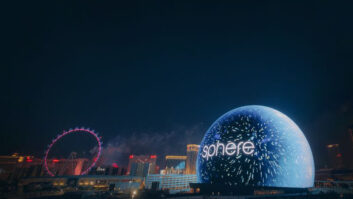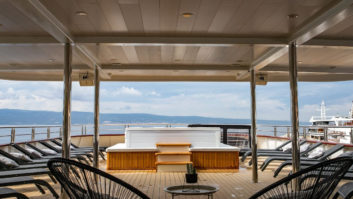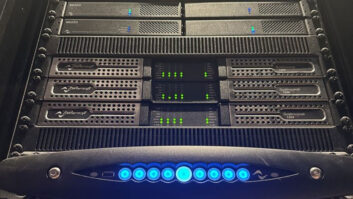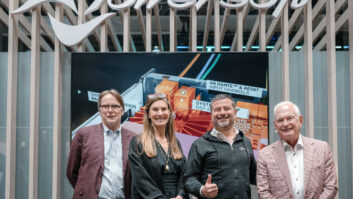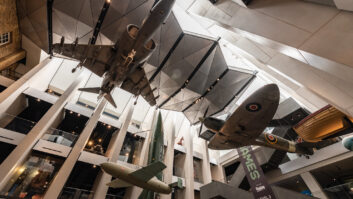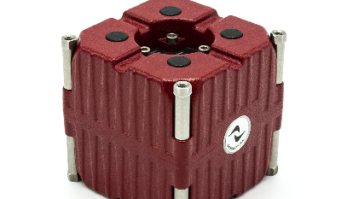Powersoft’s compact transducer, Mover, is at the heart of a new four-dimensional nightlife experience in Amsterdam which allows visitors to take a deep dive into the rich culture and educational history of electronic dance music from its roots to the present day. 64x Mover transducers, all powered by four Powersoft Quattrocanali 4804 DSP+D amplifiers, were installed as part of a technology update.
Based in Amsterdam’s Rembrandt district, Our House has been a thriving nightclub and the beating heart of the electronic music scene since the 1980s. The iconic venue has upheld its musical legacy by recently becoming a digital storytelling museum, promising a 75-minute journey into the music genre via interactive exhibits, shows and performances, telling the story of how electronic music – once a rebellious and secretive underground scene – has evolved to become a global cultural phenomenon.
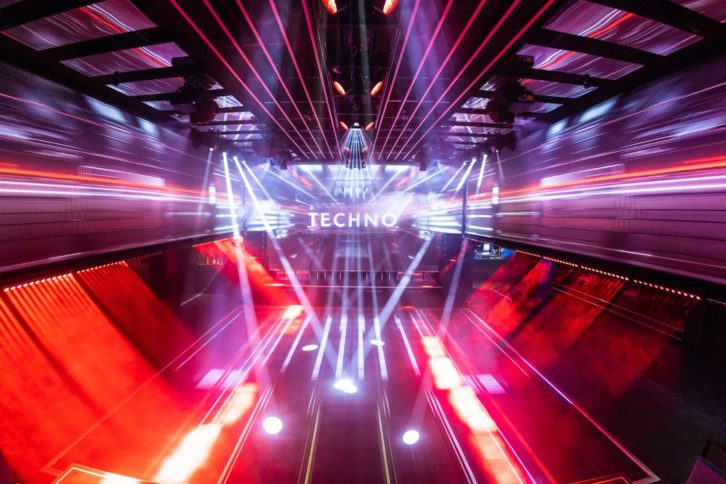 “When we came here, about two years ago, the place was very analogue: there was a sound system, strobes, smoke machine and some LEDS – that was about it,” says Our House general manager, Jeroen Jansen. “We wanted to rebuild the club with installations that could tell the story of over 40 years of dance music by using mixed technology. In order to revamp the venue and bring it to a completely new level, we received a lot of support from within the industry, including Powersoft.”
“When we came here, about two years ago, the place was very analogue: there was a sound system, strobes, smoke machine and some LEDS – that was about it,” says Our House general manager, Jeroen Jansen. “We wanted to rebuild the club with installations that could tell the story of over 40 years of dance music by using mixed technology. In order to revamp the venue and bring it to a completely new level, we received a lot of support from within the industry, including Powersoft.”
The venue’s overhaul had to be carefully considered, as it’s home to a popular nightclub, Club Air, in the evening whilst sharing the same space with museum-goers by day. Jansen sought advice from Powersoft engineers to assess the number of required Mover to support the dance floor structure they had in mind; the double layered flooring needed to support 100 people and 12 tonnes of weight. The versatile transducer can be attached to a large number of objects and structures including gaming chairs, entertainment venue seats, wall panels and, in this case, underneath the double layered dance floor.
“We came up with the idea of actively involving all technical elements that are associated with electronic music, like light, video, laser and special effects, stated Jansen. “We wanted movement from underneath people’s feet to form a completely immersive experience, created by a timecode content system,” referring to the specifically designed content as “the connector of all the dots”, bringing all the tech together at musical pinpoints.
The ‘double floor’ construction consists of one hydraulic surface, which can slide up and down 20cm, and the secondary flooring on top. The latter has the 64 transducers attached, one to each floor panel, so it can be felt wherever the person is standing.
Jansen attributes his passion for electronic music as the driving force in creating this experiential museum, which plays homage to the ‘protagonists’ (iconic DJs, bands and producers, including the likes of Daft Punk, Carl Cox and Diplo) that helped curate a first-of-its-kind experience: “It was very important to us that we created a full VR experience, without glasses, at the climactic end of the visitors’ journey. That’s where the idea of a haptic experience came up: to tie in all the technology with movement, so that everything worked in harmony.”
System integrator Lagotronics worked in collaboration with Our House to develop the “free fall” hydraulic floor system, which not only vibrates but drops downwards. “We add a special element that nobody expects, so it’s quite a shock to people when they are here; it creates a really unique experience,” added Jansen.
Mark Kocks, business development manager at Powersoft, added: “Because of the massive force we can put on a Mover, it actually replaces four of the conventional products that have been used in the past, meaning that the product is very efficient. The sensations created are unprecedented – all the visitors I’ve seen here at Our House were walking away with having experienced something new.”
Local DJs, promoters and event organisers invited to enjoy the ‘Our House’ exhibit have fed back to the team behind the project that it has broadened their sense of how music can be played, and how lower end frequencies can be introduced with Mover.
“We’re hearing from people within the industry that they are now experimenting more because of our system,” said Jansen. “The haptic system that Powersoft’s Mover has delivered to this install is something people have never experienced before.”

